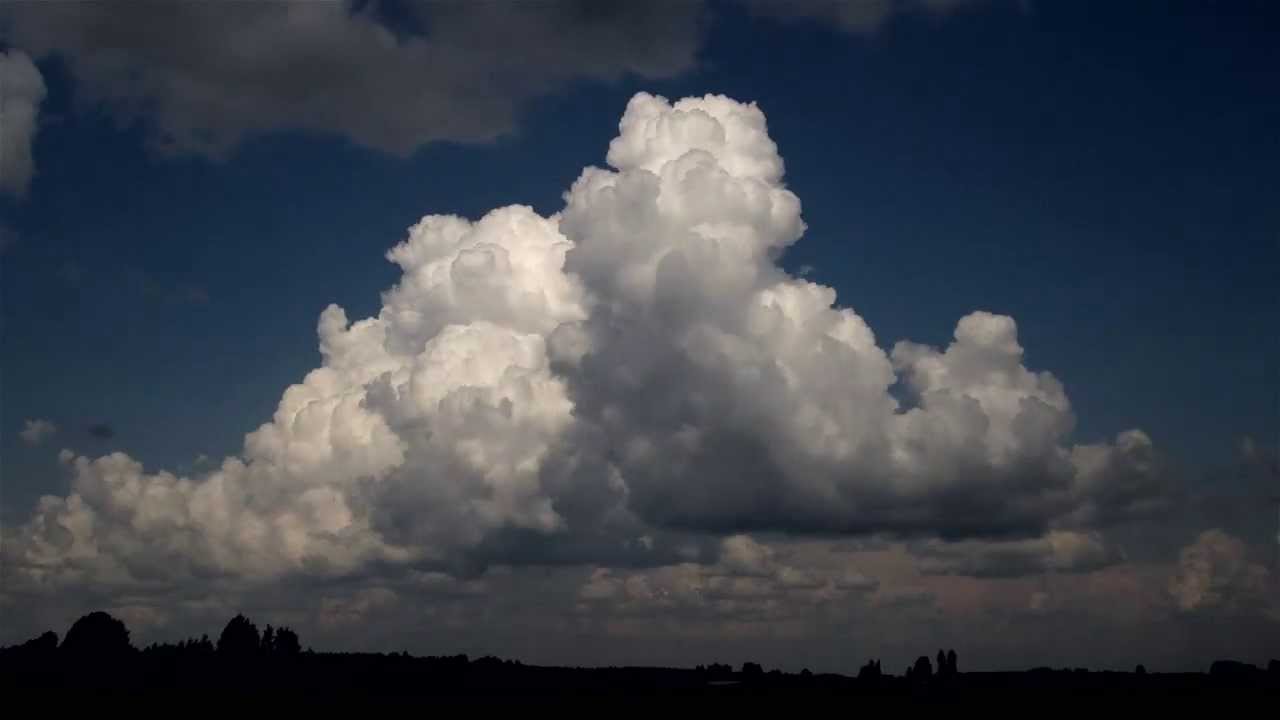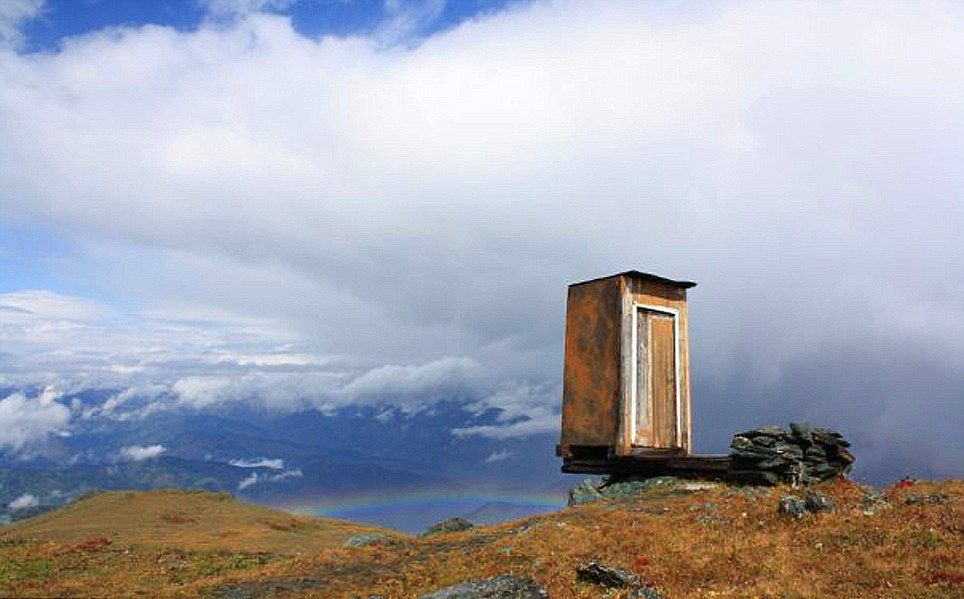

Better to be alive and wet than dry and dead
There are not many things that command so much respect in the hearts of hikers as a nice, old-school thunderstorm. One can outwrestle a bear, escape from the roaring river, but the lightning? Boom and you are done. It´s like playing Russian Roulette with nature. OK, and now, after we did set the atmosphere, let´s get to the practical stuff - how not to get hit.
The easiest way to avoid being struck by the lightning is the avoid the storms altogether. Of course, this is easier said than done, but there are still several ways to minimize the risk. Optimal planning of the trek is the first of them. Storms in Caucasus mostly develop at two periods of the day - after midnight and in the early afternoon. Therefore, it´s usually safer to start early and reach the high point of your hike before noon so you are not too exposed when the storm really hits.

Forming cumulonimbus
Of course, some hikes have no “high point” as you spend most of the time traversing the ridge. In these cases, pay extra caution to your surroundings. Look for large, puffy cumulus clouds on the horizon. If they start growing and develop darker underbellies (cumulonimbus cloud, the shape of an anvil), you can expect a storm.
At the same time, monitor the terrain around you, look for available escape routes and places offering some protection in case the storm really hits.
Also, it´s good to check the strength and direction of the wind so you know from where is the weather "coming" and which area needś to be monitored more closely. Sudden, cool gusts of wind also indicate large differences in pressure, which can be a sign of the advancing storm fronts.
And, I almost forgot, but whenever you can … check the weather forecast. Guys doing them deserve much more praise than they get...
During a storm, you have just a single task - not to make yourself a target. The lightning will most likely hit tall, protruding objects such as elevated rocks or lonely trees. Therefore, you really don´t want “to stick out”.
If you are in the forest, you should be fine. You can keep walking or hide beneath some smaller trees.

Not the best hideout during the storm
If you are outside of the forest, but not completely in the open (bottom of the valley, deep gully), you should seek a safe place. The safest places to hide are grounded buildings and cars, but those are pretty rare in the wilderness. Simple shepherd´s huts won´t protect you too much - if you decide to use it anyway, stay away from that iron tube they have instead of the chimney.
Hiding below rock overhangs and in shallow caves can be also pretty risky. Why? After the lightning strikes the rock, it usually seeks the shortest and easiest way to the ground. Mostly it goes downward on the surface, but it can also “jump” over smaller gaps or crevices. So if someone stands beneath such rocky overhand, he may get hit in the head by weaker, but still very dangerous current.

Not the best idea during the storm
When you are in partially exposed terrain, you should try to use “zone of protection” provided by higher targets. That means, that if you are near, but not beneath that high lonely tree, you should be safe. High objects provide “zone of protection” with the radius equal to their prominence over the terrain. That means, that if you are 5-20 meters away from a lonely tree 20 meters high, you should be fine - tree attracts all lightning which could otherwise hit you.
Strike of the lightning can be also predicted, at least to some degree. If your hair stands up and you feel a tingling sensation on your skin, the lightning may soon strike nearby. In such situation, immediately crouch down, put your feet together (try to stand on yours soles to minimize contact with the ground) and cover your ears - thunder is extremely loud and could easily tear your eardrums.
And now the worst case scenario - you are in the eye of the storm and there is nowhere to hide. In this case, it´s too late to try to reach shelter. Running away is pointless and dangerous - lightning travels at the speed of over 200 000 mph and running person not only sticks out but also has greater step potential (as he makes longer steps) so he is in a bigger danger if the lightning hits nearby.
So what to do? If you are on the ridge, immediately descend, at least 30-50 elevation meters. Otherwise, just crouch on the ground, cover yourself with a raincoat and wait. For better comfort and insulation, you may also sit on your backpack.
Also, shut down electronic devices and remove metal jewelry such as rings - metal doesn´t attract lightning, but is a good conductor so you may get burned if it strikes nearby. If you are in a bigger group, spread out, so even if someone gets hurt, others can provide the first aid (usually CPR, as the cardiac arrest is the number one cause of death due to lightning strike).
After the storm passes and you are in the open, you should wait a bit more to reduce risk from stray lightning. Usually, it´s recommended to wait 20-30 minutes after the last thunder and only then continue with your journey.
Contrary to popular belief, the tent will not protect you from the lightning. Therefore, you have to pick your camping spot very carefully - even if it means that you won´t have the best possible morning view.
Again, your tent shouldn´t be the highest object in the area. Also, don´t build it too close to old, decayed trees, they may fall during the storm. And last but not least, don´t build it in spots which are suspiciously greener than the surrounding vegetation. Quite often, that´s where the water flows during heavy storms. And lying in the water in the middle of the storm is not only uncomfortable but also potentially dangerous.
As you can see above, trekking in Georgia is not particularly risky compared to the rest of the world. Still, it would be reckless to travel without an insurance (I think you already see where is this going - I would be a very lousy travel blogger if I didn't try to sell you some travel insurance ). During the last 10 years I spent hiking and trekking, I used two insurances.
When I was younger, I used to have more time and could make several long trekking trips a year. My main priority was to protect myself and my relatives from unexpected costs. Because of this, I used to be a member of Austrian Alpine Club (Alpenverein). After paying the yearly membership fee of about 60 EUR, I got an insurance tailored for mountains which covered rescue costs, medical treatment as well as the repatriation costs (tho my parents didn´t look too relieved when I stressed this fact before travelling abroad).
Then my priorities shifted. Since I have a family now, I spend less time hiking and need an insurance which not only covers everything mentioned above but will also provide for them in case that something happens to me. Because of this, I started to look for more general insurance for specific dates. For my summer trekking trips, I use SafetyWing travel insurance since I am very satisfied with the coverage it offers for its cost.
SafetyWing also offers Remote Health - a more robust, full-fledged health insurance which, unlike their travel insurance covers also home country and pre-existing conditions and illnesses.
Disclaimer: Those SafetyWing links are the affiliates. That means that if you click it and buy some insurance from them, I will get a small comission. But that's not why I am promoting them, they simply look the best to me (compared it with local insurance companies as well as global ones such as World Nomads).


